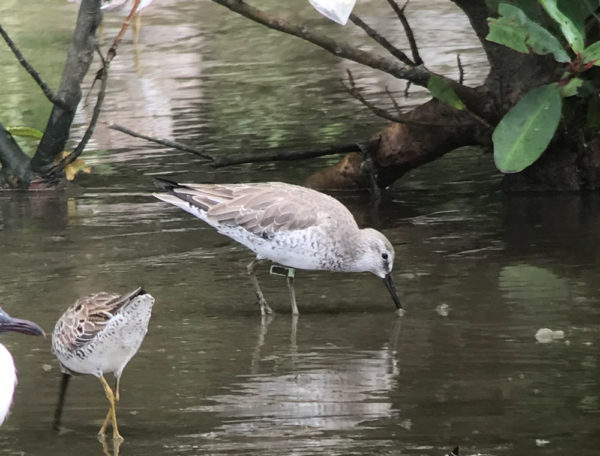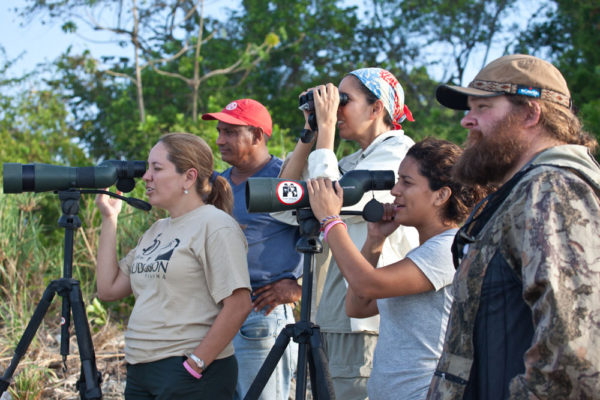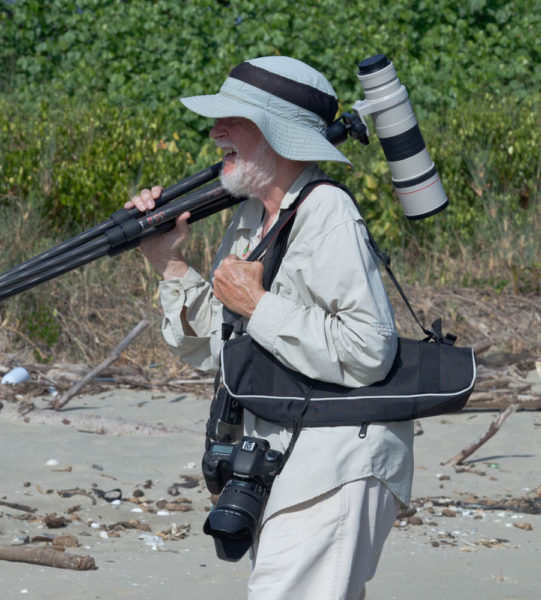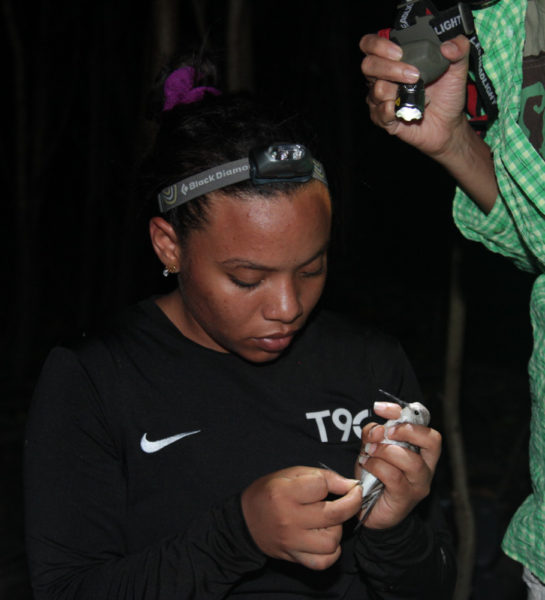Crossover Knots

James River eagle recovery enters final chapter
July 11, 2017
National Park Service and CCB continue to assess exposure of eagle nestlings to contaminants
July 13, 2017By Bryan Watts | bdwatt@wm.edu | (757) 221-2247
July 12, 2017
HHE is a red knot with the code “HHE” stamped in black letters on a lime green leg flag. HHE was initially captured on May 16, 2005 by one of the banding crews working the Mispillion Harbor site in Delaware Bay as it was staging during spring migration. The crew collected a primary covert feather to assess its isotopic signature with the intent of identifying the area where the bird spent the winter. When the isotopic signature came back from the lab, it was one of very few that fell well outside the cluster of other knots, suggesting either some aberration in the assay or that the bird was using an atypical wintering site. With no other supporting information, the bird was considered an outlier. On November 4, 2008 while conducting flock composition surveys around Panama Viejo along the Pacific Coast of Panama, Bart Paxton and Bryan Watts identified HHE within a flock of more than 100 knots. This detection helped to clarify the rogue isotopic signature but also framed a much larger question: How frequently do red knots crossover between the Atlantic and Pacific Flyways? This question has important implications for knot conservation.

Breeding plumage red knot (rufa) staging within Delaware Bay. Photo by Jan van de Kam.

Winter plumage red knot (rufa) with lime green flag foraging along the edge of mangroves in the upper Bay of Panama. Photo by Rosabel Miró.
Three subspecies of red knots breed within the arctic latitudes of the Western Hemisphere. Islandica breeds in the central Arctic, migrates east through Greenland, and winters along the coasts of the United Kingdom and northern Europe. Roselaari is believed to breed primarily along Alaska’s Seward Peninsula, migrates down the Pacific Flyway, and winters mostly along the Pacific Coast from Mexico south through Chile. Rufa breeds in the central and eastern Canadian Arctic and migrates down the Atlantic Flyway. The dominant winter areas of rufa include the southern and gulf coasts of North America, northern Brazil, and the primary site of Tierra del Fuego/Patagonia in southern South America. Rufa has declined dramatically since the 1980s, eventually leading to its elevation to federally “threatened” status by the U.S. Fish and Wildlife Service in December of 2014. Identifying locations used by rufa during winter, migration, and breeding and the potential threats within these areas are important objectives for the conservation community. An open question is whether HHE is an oddball or whether it is one among a group of rufa that are crossing over the isthmus to winter within the Pacific Flyway.

Part of the Panama Audubon survey crew including (left to right) Yenifer Díaz, Pacora chaperone, Rosabel Miró, Michelle Caballero, and Fletcher Smith. Photo by Bryan Watts.
The Panama Audubon Society has been conducting ground surveys including flag resighting along the Pacific Coast. This effort, conducted by Rosabel Miró, Yenifer Díaz, Stephany Carty, and Karl Kaufman, is beginning to add to the evolving picture of rufa using the upper Bay of Panama. The crew has identified several birds that were either banded in Delaware Bay or have been resighted there, forging a link between a winter area in Panama and one of the most significant spring staging sites for rufa. The pivotal question about how many rufa may be spending the winter along the Pacific Coast of Panama remains difficult to answer. Red knots wintering within the accessible locations in the upper Bay number in the hundreds and likely represent a mixture of rufa and roselaari. However, the number of knots contained within the throngs of western and semi-palmated sandpipers stretching along the inaccessible coast toward Columbia is not known and the subspecies of knots that use the sandy beaches stretching from Chamé to Costa Rica has not been determined. It is possible that rufa using the Pacific Coast of Panama may number as high as in the low thousands, but more work is needed.

Karl Kaufmann walking the beach at Pacora in pursuit of shorebirds. Photo by Bryan Watts.

Stephany Carty, a member of the resight crew, examines a western sandpiper along the upper Bay. Photo by Bryan Watts.
On January 5, 2017, the Panama Audubon crew identified HHE within the Pacora field site. Now at least 14 years old, HHE was foraging with another flagged bird with code “P68.” P68 was banded at Reeds Beach in Delaware Bay on May 29, 2012.



